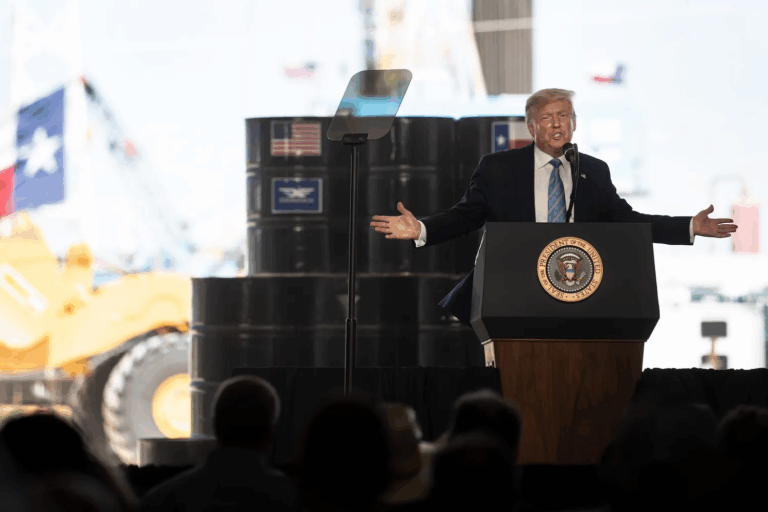November 9, 2015
By Yassamin Issapour*
—
Future Russian Vulnerability to Sanctions
Since the outbreak of the crisis in Ukraine in November 2013, the United States and the European Union have implemented sanctions targeted at major Russian state banks and corporations, as well as individuals who are considered part of Vladimir Putin’s inner circle. The sanctions were initially geared toward making the cost of continued interference in Ukraine painful to Putin and his ruling clique and were later expanded to measures that have wider implications for Russia’s economy. How effective the sanctions have been could be debated, however. While Russia and Ukraine did reach a ceasefire agreement in February 2015, the violence has not completely subsided and there are concerns that it could collapse, despite efforts to keep it going.
Against this background, the Russian economy is facing some serious headwinds. Stemming largely from the oil price collapse that began in mid-2014, Russia’s real GDP is projected to contract by 2.7 percent in 2015, with growth of 0.7 percent forecast for 2016 and 2.5 percent in 2017.[1] Additionally, there signs that the Russian economy is incurring some longer-term costs from sanctions. For example, the capital outflow and decreased foreign direct investment limits the transfer of innovation and technology that is critical to increasing Russia’s growth.
Not surprisingly, Moscow has maintained that the economy has held up well under sanctions pressure. One of the Russian government’s main arguments in favor of this proposition is the fact that there continues to be substantial foreign direct investment (FDI) by Russian companies abroad. This post examines the pattern of FDI by Russian companies as part of an effort to ascertain the impact of sanctions on the Russian economy and to help determine the overall health of that economy.
Deep Dive in Russia’s Financial Movements
High political risk and low transparency in Russia has historically created a tendency for Russian investors to look overseas. Moscow has attempted to increase domestic investment by establishing regulations that penalize Russian individuals and firms that invest abroad, a policy referred to as “de-offshorization” by Putin. Still, many investors choose to make foreign direct investments into countries that are known off-shore tax havens such as Cyprus, Bermuda, the Caribbean islands, and Jersey. In the first quarter of 2014, capital outflow from Russia reached approximately $63.7 billion (with approximately 48% of outflows to tax havens), the highest quarterly outflow since the last quarter of 2008 during the height of the global financial crisis.[2]
Prior to 2014, when FDI into Russia sharply declined, Russia was amongst the world’s largest FDI market participants, in regards to both inflows and outflows.[3] The high capital outflows are matched by a large share of inflows of FDI from Cyprus and several other countries–indicating that there is likely a re-circulation of the original capital outflow from Russia. According to a World Bank Report from April 2015: after removing FDI that likely originated in tax havens, the ratio of Russia’s FDI inflows for 2007-2013 was about 1.8 percent, comparable to that for India and South Africa.[4] This comparison may understate the amount of round-tripping in Russia’s inbound FDI since it may also involve other reported sources.[5] A closer look at foreign direct investment in Russia reveals that in Q1-Q3 of 2013, FDI 47% lower than the average for Q1-Q3 in 2011 – 2013. The decrease in foreign direct investment in 2014 came from non-tax haven countries. The same World Bank report states that in Q3 of 2014, the pattern of FDI from tax havens shifted from heavy inflows into Russia in the first half of 2014 to net outflows, enough to make the flow of FDI into Russia negative. According to the report, $4.6 billion in capital outflows from Russia went into tax havens like Cyprus in the third quarter of 2014, while US$900 million went to Bermuda and the British Virgin Islands.
Evidently, there is a large historical precedent for capital flight in Russia via Russian foreign direct investment into proxy businesses into other countries in order to protect financial assets. The lack of resources at home are a major issue, and the government attempted to redress this historical precedent by creating tax-free investments. Putin’s policy of “de-offshorization” is unsuccessful as foreign and domestic capital continue to be averse to investing, and Russia’s medium-to long-term growth prospects will suffer–but Putin continues to insist that the economy is not suffering.
Future Vulnerabilities in Russia
The sanctions and net outflows in Russia have led to the depreciation of the ruble that put pressure on inflation. The flight from the ruble was compounded in the second half of 2014, when falling oil prices caused the ruble to lose nearly half of its value against the U.S. dollar in 2014. Overall access to liquidity and foreign capital markets is non-existent due to the sanctions–this hinders the financial sector’s ability to access credit. Although there is an impulse for substitution, given the persistent structural rigidities and little spare capacity to expand without further investment, its potential appears to be limited. Russia presents itself to the global market as a resilient economy. The FDI data, however, suggests that if the tax havens and recirculation of FDI funds were taken away, Russia’s economic health be severely damaged and that sanctions have had a greater impact than Moscow would want to admit.
The Russian’s activities have been noticed by U.S. government sanctions officials. IPP Oil Products, headquartered in Cyprus, was added to the sanctions list in 2015.[6] This latest effort from the United States is intended to close the loopholes of former sanctions and hinder the outflows of Russian funds to Cyprus. It is unclear whether the United States will continue to sanction the proxy businesses in the future in order to create a larger impact without severely injuring peripheral economies, though the fact that much of the FDI associated with these transactions is really just capital flight in disguise may limit the damage created.
***
*Yassamin Issapour was a Research Assistant at the Center on Global Energy Policy until September 2015. The views expressed are her own.
[1] “World Bank Revises Its Growth Projections for Russia for 2015 and 2016,” The World Bank, June 1, 2015, http://www.worldbank.org/en/news/press-release/2015/06/01/world-bank-rev….
[2] Bureau of Economic and Business Affairs, “2014 Investment Climate Statement – Russia”, US Department of State, June 2014, http://www.state.gov/e/eb/rls/othr/ics/2014/227933.htm.
O. Kuzmina et al, “Foreign Direct Investment and Governance Quality in Russia,” New Economic School, April 2014, http://www.nes.ru/dataupload/files/CV/Papers/JCE%20Kuzmina%20Volchkova%2….
[3] “Russia: Foreign Investment,” Santander, https://en.santandertrade.com/establish-overseas/russia/foreign-investment.
[4] The World Bank in the Russian Federation. “Russia Economic Report 33: The Dawn of a New Economic Era?” Russia Economic Report 33: The Dawn of a New Economic Era? World Bank Group, 5 Apr. 2015. Web.
[5] Ibid.
[6] J. Farchy, “US frustrates Russian oligarchs’ cat and mouse over sanctions,” Financial Times, August 9, 2015, http://www.ft.com/intl/cms/s/0/3a5326d0-3ce4-11e5-bbd1-b37bc06f590c.html….





